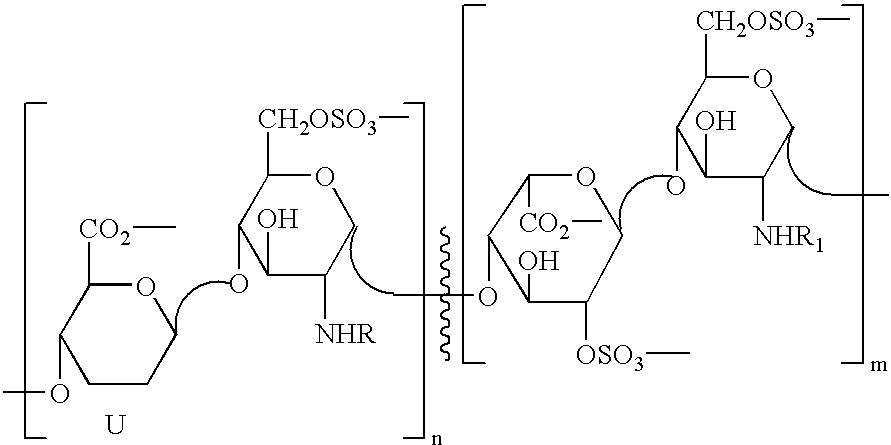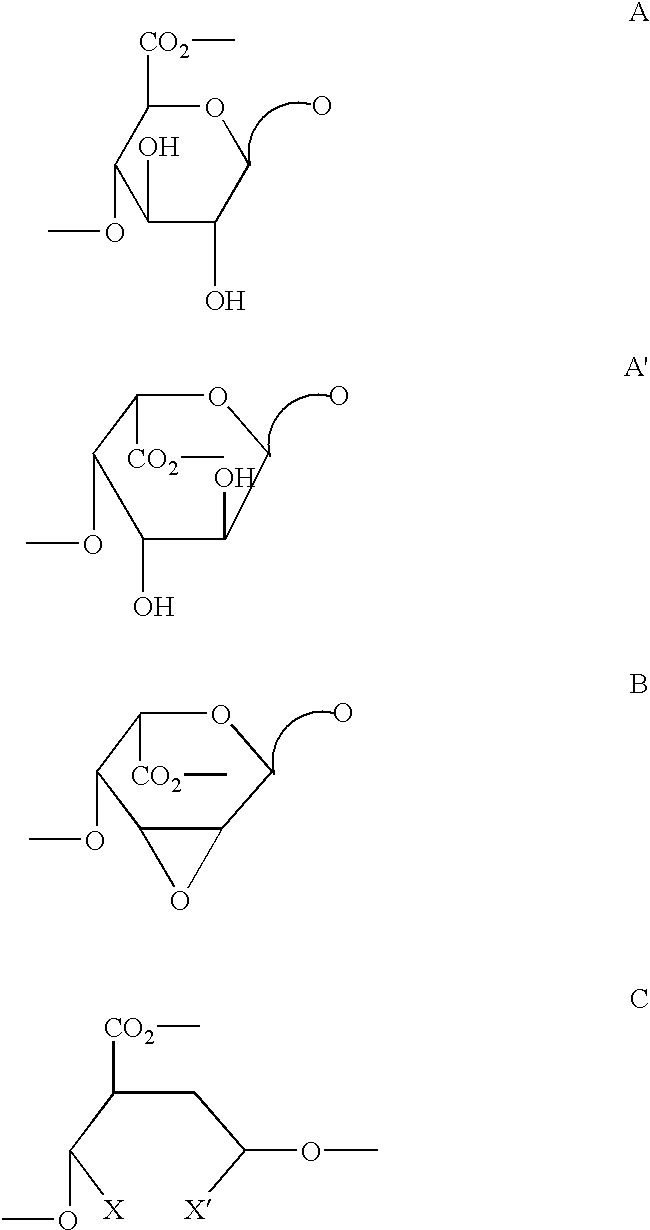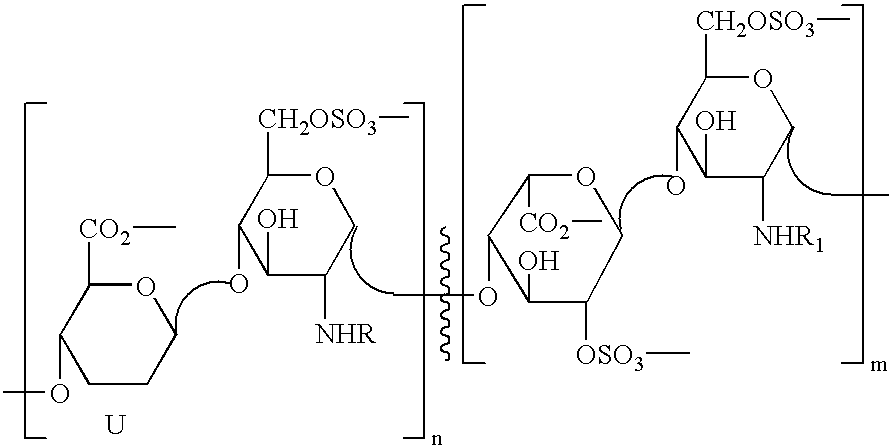Derivatives of partially desulphated glycosaminologycans endowed with antiangiogenic activity and devoid of anticogulating effect
a glycosamino-sulfate, anti-angiogenic technology, applied in the direction of antinoxious agents, drug compositions, metabolism disorders, etc., can solve the problems of many aspects still unsolved, defeating or at least limiting this type of pathology, and achieving the effect of increasing the local or systemic level of growth factors
- Summary
- Abstract
- Description
- Claims
- Application Information
AI Technical Summary
Benefits of technology
Problems solved by technology
Method used
Image
Examples
examples 2-4
[0163] Adopting the same procedure as in example 1, with the exception that the basic solution was heated for 15, 30 and 60 minutes, respectively, compounds with the following characteristics were obtained:
[0164] ST1513: molecular weight (MW) 12900 D, polydispersion index D 1.5, desulphation degree 2.05 (expressed as SO.sub.3--:COO-- molar ratio), percentage of modified uronic acids compared to total uronic acids: 5% epoxide groups, 29% oxidated and reduced (split) uronic residues;
[0165] ST1516: molecular weight (MW) 12900 D, polydispersion index D 1.5, desulphation degree 1.8 (expressed as SO.sub.3.sup.-:COO.sup.- molar ratio), percentage of modified uronic acids compared to total uronic acids: 5% epoxide groups, 29% oxidated and reduced (split) uronic residues;
[0166] ST1515: molecular weight (MW) 9200 D, polydispersion index D 1.5, percentage of modified uronic acids compared to total uronic acids: 11% epoxide groups, 27.5% oxidated and reduced (split) uronic residues.
PUM
| Property | Measurement | Unit |
|---|---|---|
| temperature | aaaaa | aaaaa |
| temperature | aaaaa | aaaaa |
| temperature | aaaaa | aaaaa |
Abstract
Description
Claims
Application Information
 Login to View More
Login to View More - R&D
- Intellectual Property
- Life Sciences
- Materials
- Tech Scout
- Unparalleled Data Quality
- Higher Quality Content
- 60% Fewer Hallucinations
Browse by: Latest US Patents, China's latest patents, Technical Efficacy Thesaurus, Application Domain, Technology Topic, Popular Technical Reports.
© 2025 PatSnap. All rights reserved.Legal|Privacy policy|Modern Slavery Act Transparency Statement|Sitemap|About US| Contact US: help@patsnap.com



